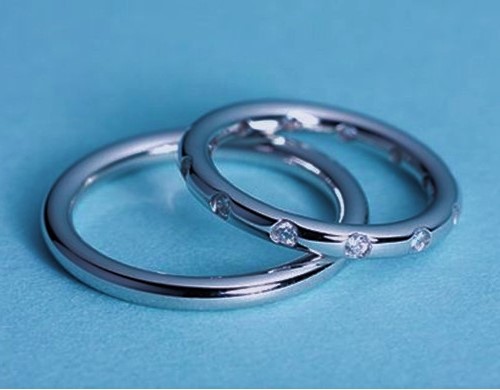The history of platinum
Platinum is a familiar metal. Most people only know that platinum is very expensive and can be used to make jewellery. Many people think that platinum is a metal that has only appeared in modern times. In fact, the history of platinum can be traced back 2 billion years and is linked to meteorite collisions. In fact, it has been used by humans for more than two thousand years. More than two thousand years ago, there are records of the ancient Egyptians and Indians making jewellery from platinum. After that, it was not well used for more than a thousand years and gradually disappeared from people’s sight, and it was not until the 18th century that it became an important alchemical metal and was valued again. At this time, platinum was not widely used in jewellery. It was not until the end of the 19th century that platinum was used by royal families in Europe to make jewellery and platinum really came into the public eye.
As a precious metal in modern times, platinum has an extremely high value due to its unique scarcity. In fact, it is 30 times rarer than gold, yet its market price is lower than that of gold. The reason for this phenomenon is due to many factors, such as supply and demand. Although the price of platinum is not as high as gold, it is also a precious metal that holds its value. It is used in various industries, such as the electronics industry, and can be used to make various electronic components, such as the most common resistors. It can also be used in the chemical industry to make catalysts, etc. In addition, there are automobile manufacturing, medical equipment, metal jewellery, etc.
Platinum is widely used in metal jewellery. Why can platinum be used in jewellery? What are the advantages of platinum in metal jewellery?
Scarcity and added value
Platinum is a scarce mineral with high refining and mining costs. Platinum’s stable chemical properties and the fact that it is found only in one form in nature give it a high collector’s value and make it an ideal material for jewellery. Through the brand advantage, jewellery manufacturers add fine craftsmanship to add more artistic value to platinum. At the same time, it has unique advantages in the production of precious jewellery and luxury goods. It is very suitable for engraving various beautiful patterns and is widely used in the field of pneumatic engraving. Now more and more young people are trying to carve their own jewellery.
Beautiful appearance and lustre
The most important thing about platinum used in the jewellery industry is that it has a very beautiful lustre, which shines even more under the light. This is why platinum is loved by so many people. At the same time, when it is worn and rubbed against the human body for a long time, it can retain its lustre for a long time without oxidising. After professional and fine processing and polishing, platinum will be brighter under the light.
Safety
Platinum is a very skin-friendly metal and usually does not fade or cause skin allergies in humans over long periods of wear. Metals that can cause skin allergies include nickel, chromium, etc., which can cause symptoms such as skin itching, redness and swelling. Of course, everyone’s body is different and some people will not be allergic to metals that tend to cause allergies. Platinum is obviously a more suitable choice for most normal people. Whatever type of metal jewellery you choose, regular cleaning can also reduce the chance of skin allergies. If you do develop an allergy, you should seek medical advice immediately.
Toughness and durability
The production of jewellery requires a highly malleable material that can be formed into various shapes and often requires fine engraving. If the metal breaks during the engraving process, it will definitely not work and platinum has an extremely high ductility. Platinum does not break easily during the jewellery-making process. It is a very ideal metal for jewellery making. It also means that platinum has extremely high durability. People can wear platinum jewellery as often as they like without having to worry about protecting it. To ensure durability, in daily life, keep away from various chemicals as much as possible to prevent platinum from chemical reactions and corrosion.
Suitable for alloying
Although platinum is very strong, it is actually a relatively soft metal and relatively large forces will still cause platinum to deform. For this reason, platinum used in jewellery is usually not pure platinum, but has a small amount of other metals added. This increases hardness and improves durability. Commonly used metals include ruthenium, cobalt, iridium, etc., which are mixed with platinum in varying proportions to form alloys.
How can you tell the authenticity of platinum jewellery?
First of all, when we buy jewellery, we try to choose reputable shops that can largely guarantee the authenticity of the platinum.
And how can ordinary people tell the difference at home? The easiest and safest way is to measure the weight. The weight can be calculated from the density of platinum 21.45 to see if there is any deviation from the actual weight. Of course, there are three situations that can lead to errors. The first situation is that the electronic scale used to measure the weight is not accurate enough, because some pieces of jewellery are relatively small and the insufficient accuracy of the electronic scale can lead to relatively large errors. The second situation is that the jewellery has been worn for a long time and has become too dirty or worn and needs to be cleaned and reweighed. Finally, the jewellery may not be made from pure platinum. As mentioned above, to increase the hardness and durability of platinum, the jeweller may add a small amount of other metals to create an alloy. Under normal circumstances, if you are still concerned, you can find a professional agency for testing.





